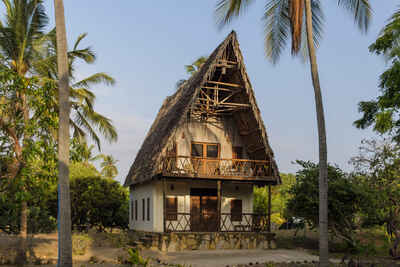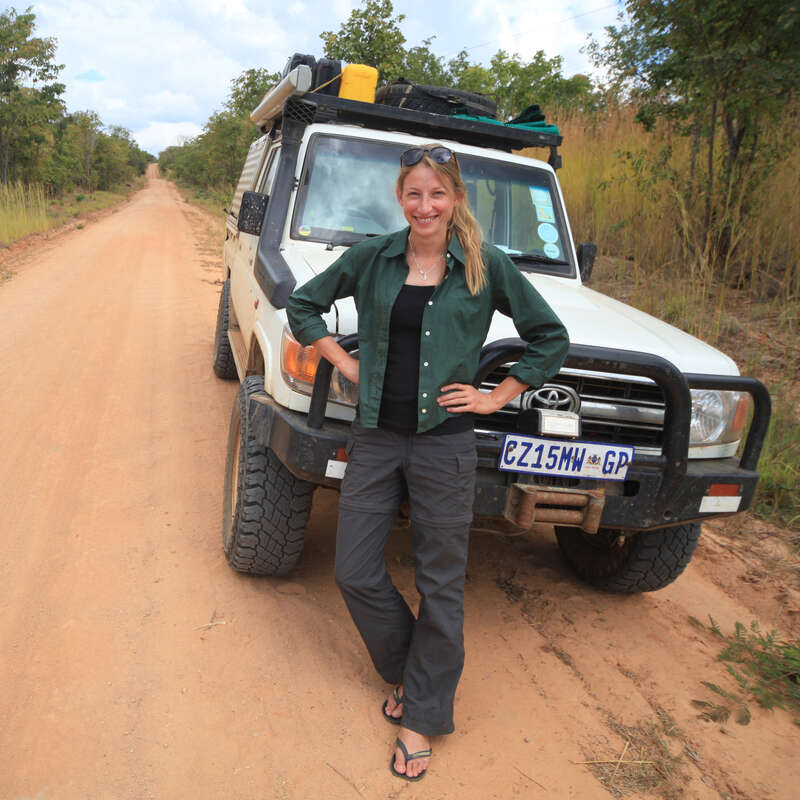About The Tides Lodge
The Tides Lodge is deliberately low-key and relaxed in style and well integrated into the local community.
Its remote location means you will not have to share the beach with hordes of other tourists, allowing you to really relax and enjoy the tranquility that the lodge has to offer.
The Tides is the perfect laidback beach getaway for those who are wanting to visit a rural stretch of coastline. Don't come expecting lots of activity, this is really a place to come and unwind at a lodge that is positively working together with the local community and championing all things Tanzanian.
Our view
The Tides is the perfect laidback beach getaway for those who are wanting to visit a rural stretch of coastline. Don't come expecting lots of activity, this is really a place to come and unwind at a lodge that is positively working together with the local community and championing all things Tanzanian.
Accommodation
9 cottages
Children
Fine for all ages.
Open
Closed in May
Activities

Birdwatching

Boat trip

Snorkelling

Watersports
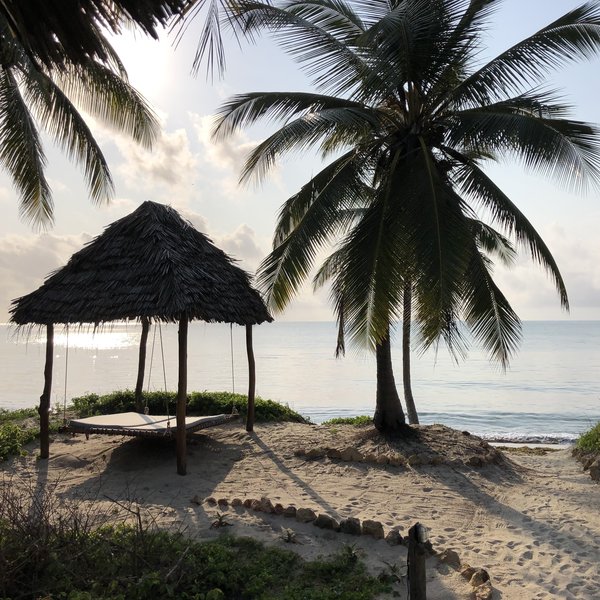
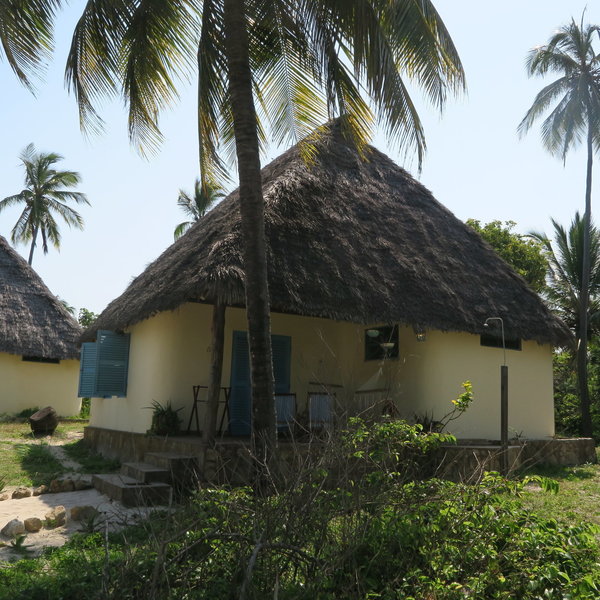
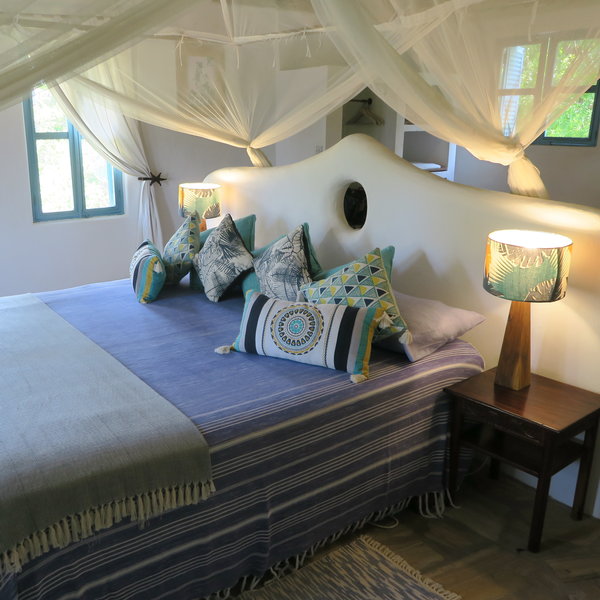
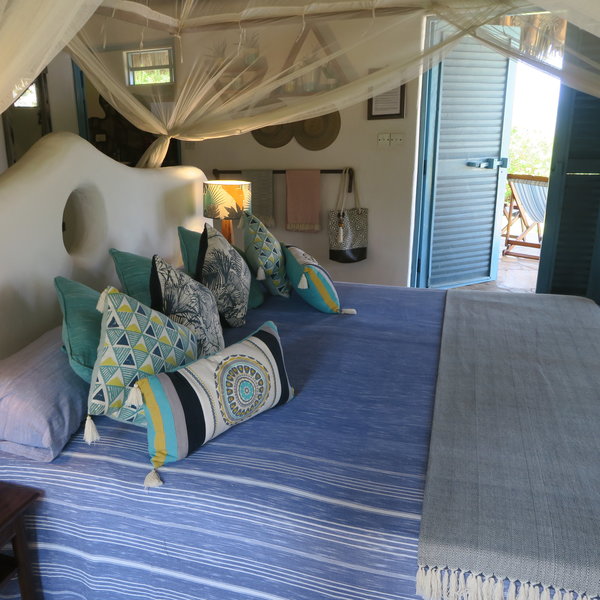
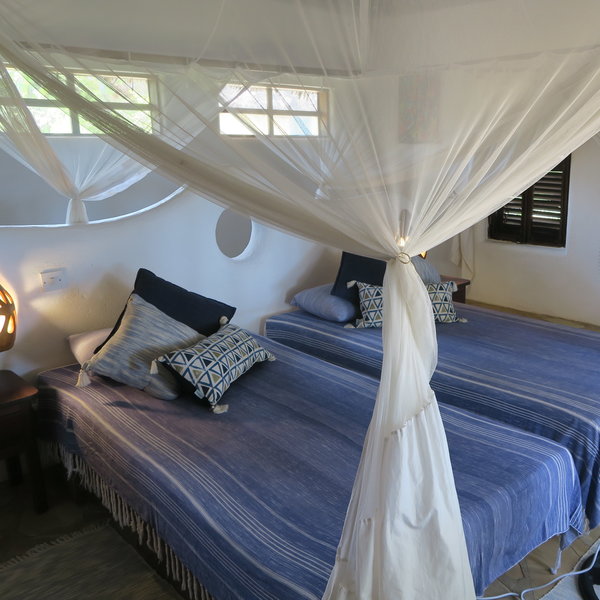
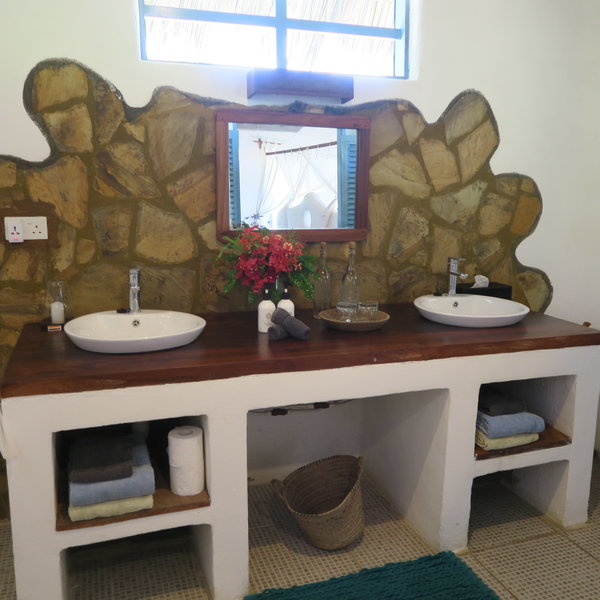
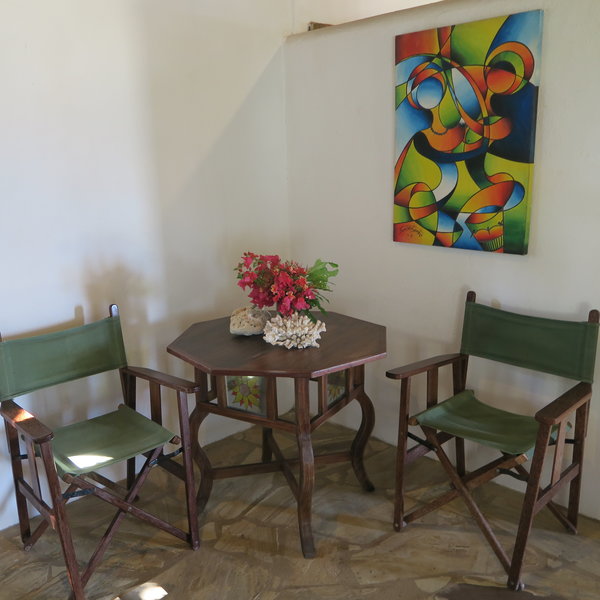
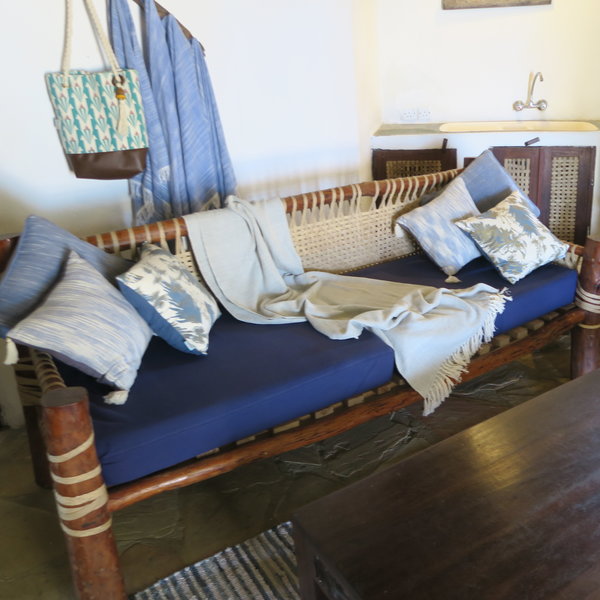
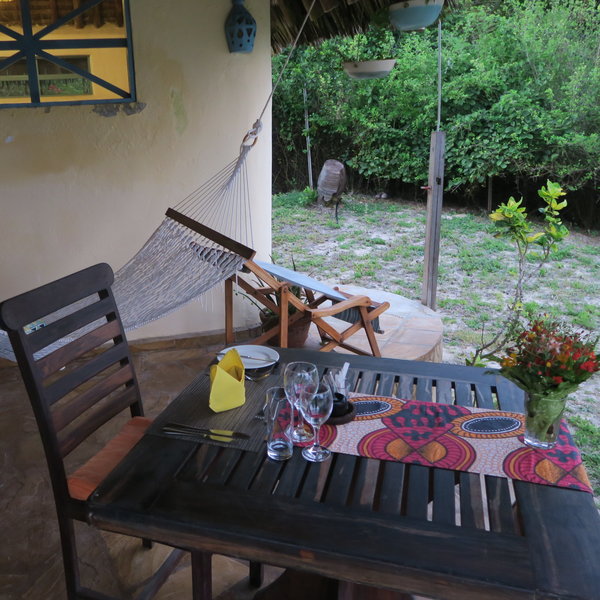
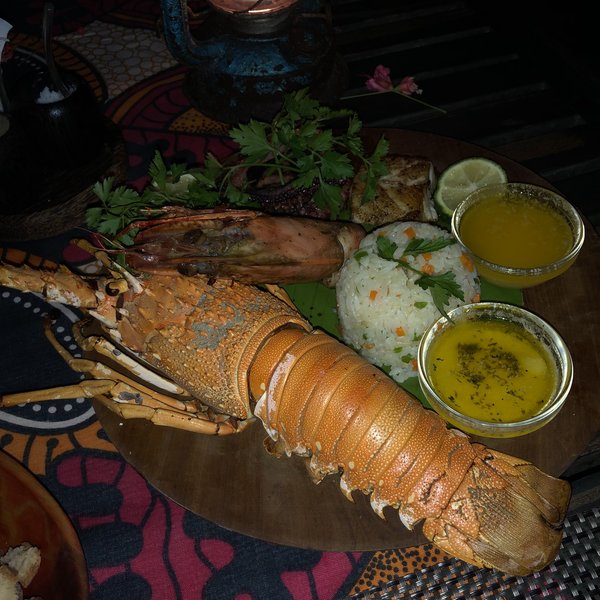
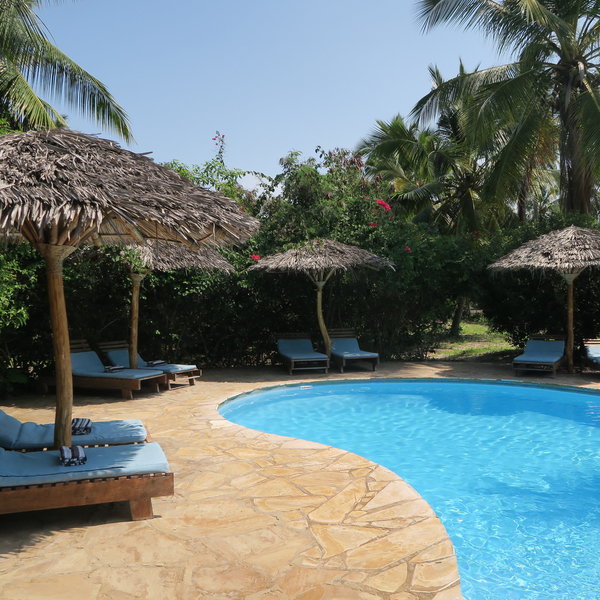
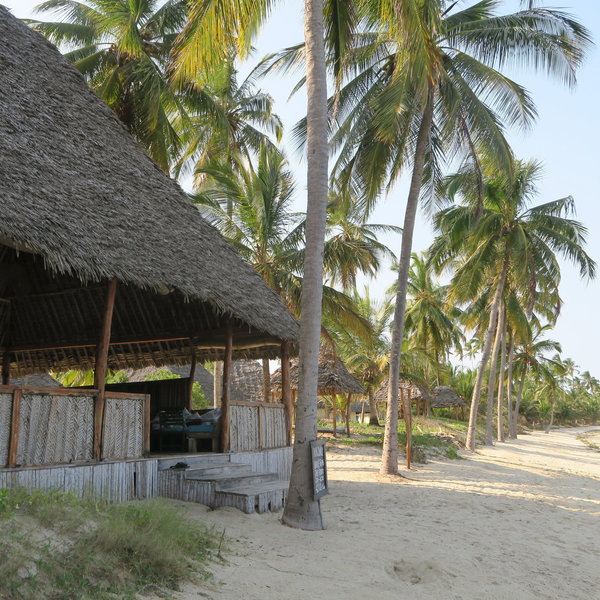
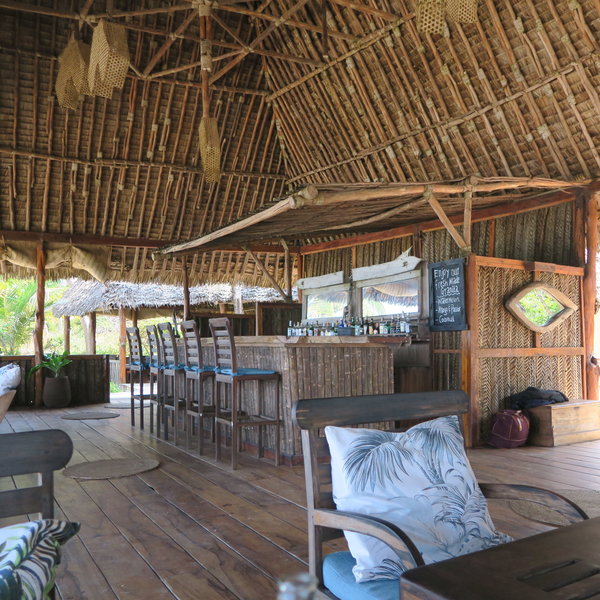
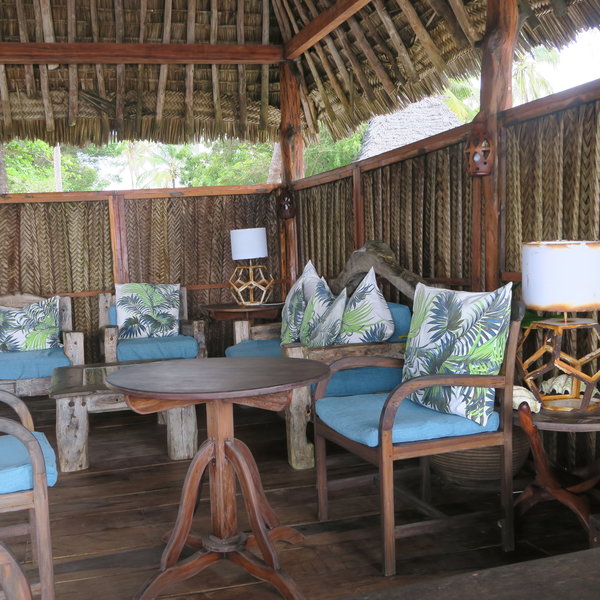
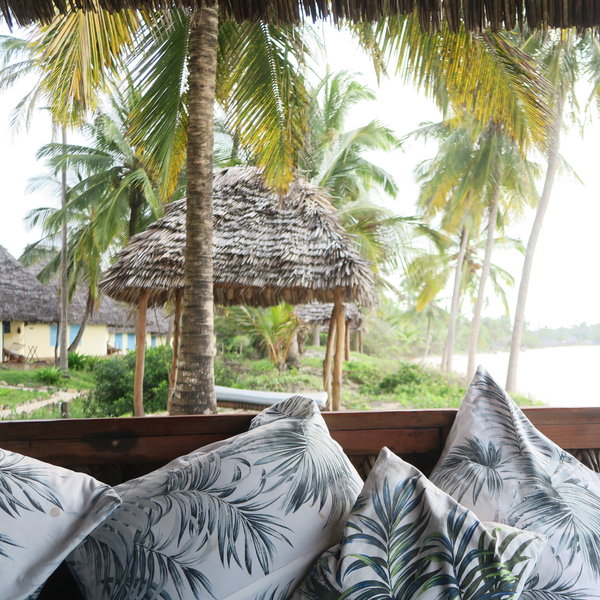
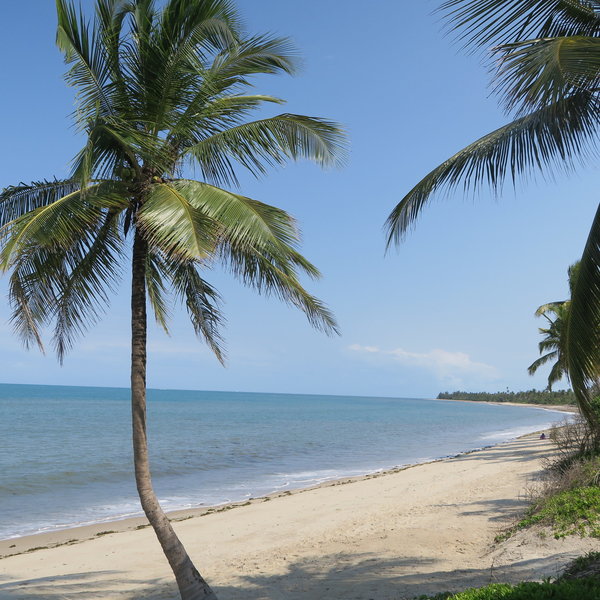
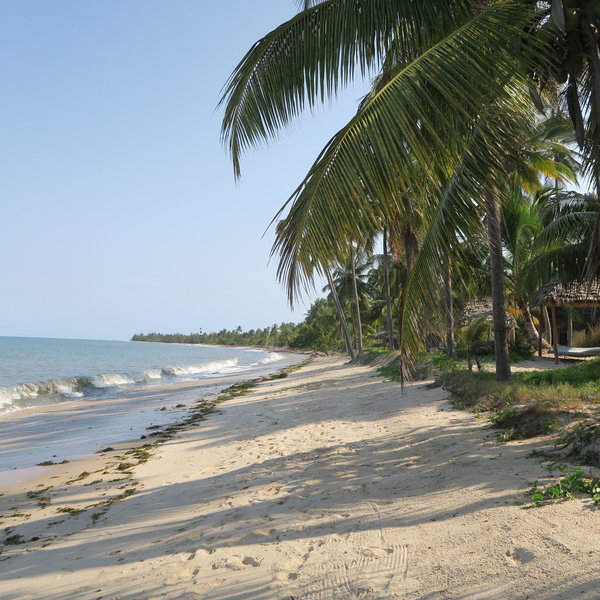
Expert Africa's gallery
When we travel we take lots of photos ourselves to give you a real and un-edited view of the holidays. See our 22 pictures of The Tides to get the candid view.
View galleryThe Tides Lodge: Our full report
The Tides Lodge is deliberately low-key and relaxed in style and well integrated into the local community.
Its remote location means you will not have to share the beach with hordes of other tourists, allowing you to really relax and enjoy the tranquility that the lodge has to offer.
**Unfortunately The Tides closed in 2020 and seems unlikely to re-open. Please contact us at Expert Africa for the latest information**.
The Tides’ central, open-sided dining and lounge area, is a good place to relax and socialise with other guests. This is also where you'll find the bar and a list of daily specials. If you fancy a break from the beach, the good-sized swimming pool is a short stroll from the dining area, and has comfortable loungers and thatched umbrellas.
The lodge has nine well-spaced breezy cottages, each looking out onto the Indian Ocean. Seven are thatched and suitable for two guests. If you’re travelling with children you might prefer one of the two stone bungalows, which have two separate bedrooms and a shared bathroom.
All the rooms here have been tastefully decorated with a rustic charm. Inside you’ll find a large bed, draped in a mosquito net, with blue linens and colourful cushions, all of which are made using Tanzanian cotton by a charity supporting disabled workers in Iringa, near Ruaha National Park. To one side is the en-suite bathroom with flush toilet and solar heated shower. The light wooden furniture and artwork throughout have been lovingly made by staff members. There are also nice touches such as straw hats, beach bags and kikois for use on the beach.
Each cottage has a private verandah, with a hammock and deck chairs, and a king-size swaying beach bed overlooking the ocean.
The lodge believes that they can touch more lives than just that of their guests. They work hard to bring employment and social development to the local village of Ushongo, and source as much as they can from across Tanzania. From the food to furnishings, everything here has been carefully and thoughtfully selected to empower the lives of others - and in turn make a positive impact. It’s an excellent example of tourism and sustainability working hand in hand.
Most guests who choose to come to The Tides will enjoy simply just relaxing and not doing very much, however various activities can be organized. When we visited in 2019, we really enjoyed a guided walk through Ushongo village with a member of the bar team, who showed us the school, clinic and water pump, all supported by the lodge.
The lodge has kayaks, stand up paddle-boards and a sailing boat for guest use (at no charge), and it is a possible to organize deep sea fishing and scuba diving. Day trips to the Maziwe Marine Park for some snorkelling and a picnic are popular, and the lodge can even arrange day trips to Sadaani National Park.
If you’re a larger family or a group of friends travelling together The Tides has a private house - Mawimbi Villa which can be rented on an exclusive basis. Talk to us for more details on this.
Activities
Birdwatching
Boat trip
Snorkelling
Watersports
Families & children
- Attitude towards children
- The Tides welcomes children of all ages.
- Property’s age restrictions
- There are no age restrictions at The Tides.
- Special activities & services
- There is a childrens menu and babysitting can be arrange with one of ladies in housekeeping.
- Equipment
- Cots and highchairs can be provided.
- Generally recommended for children
- This is a very family friendly property, although parents should supervise their children at all times - especially at the pool or on the beach. There is no lifeguard at either and there can be strong undercurrents.
Food & drink
- Usual board basis
- Full Board
- Food quality
- The Tides sources most of its food locally, supporting the Ushongo village and ensuring that the food is as fresh and tasty as possible for the guests. The local fisherman provides the lodge with a variety of seafood and this is complemented with seasonal fruit and vegetables from local small holdings.
The current manageress is a professionally trained chef and has been working closely with the kitchen - and it shows. We found the food at The Tides extremely good.
Breakfast is a typical set up with a choice of tropical fruit, breads, jams and spreads, as well as the option to have a cooked breakfast, with tea, coffee and a selection of juices.
For lunch there is a selection of light snacks and meals including salads, burgers, fish cakes and kebabs. We enjoyed the coconut crumbed prawns with a chili dipping sauce and salad.
Dinner is a nightly set three-course menu, and the chef takes inspiration from local ingredients and spices. We were treated to the most spectacular seafood platter, including a whole lobster. It was delicious and wonderfully prepared, if far too big for one person! To start we had a spinach ravioli and desert was a rich chocolate and passion fruit torte with vanilla ice cream.
Food preferences and dietary requests can be catered to with advance notice. - Dining style
- Individual Tables
- Dining locations
- Indoor and Outdoor Dining
- Drinks included
- If staying on 'All Inclusive' all drinks are included, even cocktails, otherwise drinks are an additional cost. You can expect to pay around $2 for a soda, $4 for a beer, $8 for a cocktail and $35 for a bottle of wine.
Getting there
- Location
- Tanzania Coast, Tanzania
- Ideal length of stay
- 3-4 nights is probably long enough to spend here as activities are limited, however if you enjoy simply relaxing on the beach than you can easily spend longer.
- Directions
- Flights from Dar es Salaam (1 hour) or Kilimanjaro (2 hours) to Pangani Kwajoni airstrip. The Tides Lodge is around 10 mins drive from the airstrip.
- Accessible by
- Fly-and-Transfer
Communications
- Power supply notes
- 24 hour electricity with a back up generator. Plugs in rooms.
- Communications
- Wifi can be accessed in the bar area. There is patchy cellphone signal.
- TV & radio
- No TV, but guests can usually watch big sports matches at the local village bar.
- Water supply
- Borehole
- Water supply notes
- Fully plumbed. Desalinated and filtered water provided for drinking.
Health & safety
- Malarial protection recommended
- Yes
- Medical care
- There is a basic first aid kit on site and management are trained. There is a doctor based 20 minutes away who can visit if needed. Their nearest hospital is in Tanga or Dar es Salaam.
- Dangerous animals
- Low Risk
- Security measures
- Gated entrance at the front of the property. There is a night watchman patrolling the property in the evening.
- Fire safety
- Fire extinguishers in the room and a fire meeting point on the beach.
Useful info
- Disabled access
- On Request
- Laundry facilities
- Extra charge unless staying on an All Inclusive package.
- Money
- No money exchange. There is a lockable wooden trunk in guest rooms and valuables can also be left in the managers office.
- Accepted payment on location
- All major currencies including US Dollars, Tanzanian Shillings, GB Pounds and Euro. Credit cards (including Amex) can be accepted with a 5% surcharge.
Plan and book your trip with Expert Africa
All of our trips are tailor-made, so we'll always adapt them to suit you. Talk to an Expert and let us plan and arrange your perfect trip.

Talk to an Expert
Call or email us now! We’ll match you with the Specialist in our team who is best suited to help you. Then together we can start planning your trip.

Set up your itinerary
Based on our experience and your ideas, your specialist will create a detailed, costed itinerary. We’ll refine it together, until we have a trip that you’re perfectly happy with.

Prepare for your trip
The same Specialist will make the seamless arrangements for your trip, send you detailed travel documents, and be available to answer any questions before you depart.

Travel with peace of mind
After you set off, you’ll be cared for by our partners in Africa, most of whom have worked with Expert Africa for decades. And if you ever need us urgently, we’re available 24/7.

When you return
We love to learn about your trip, and so will always be grateful if you’ve the time to give feedback to your Specialist when you return.
The Tides Lodge's location
Look closer at the environment and surroundings of The Tides.
Other lodges in Tanzania Coast
Alternative places to stay in this same area.
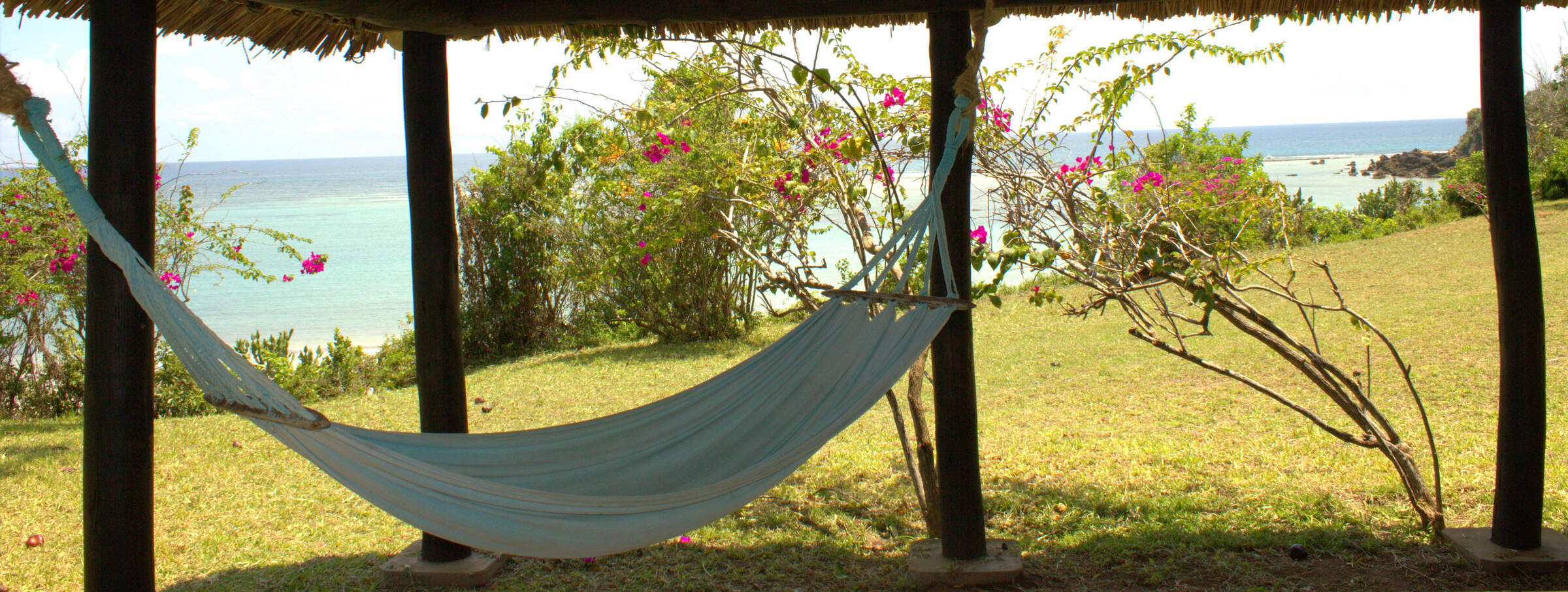
Amani Beach
Amani Beach is a family-friendly beachfront hotel and the ideal place to relax for one or two days prior to or after a safari.
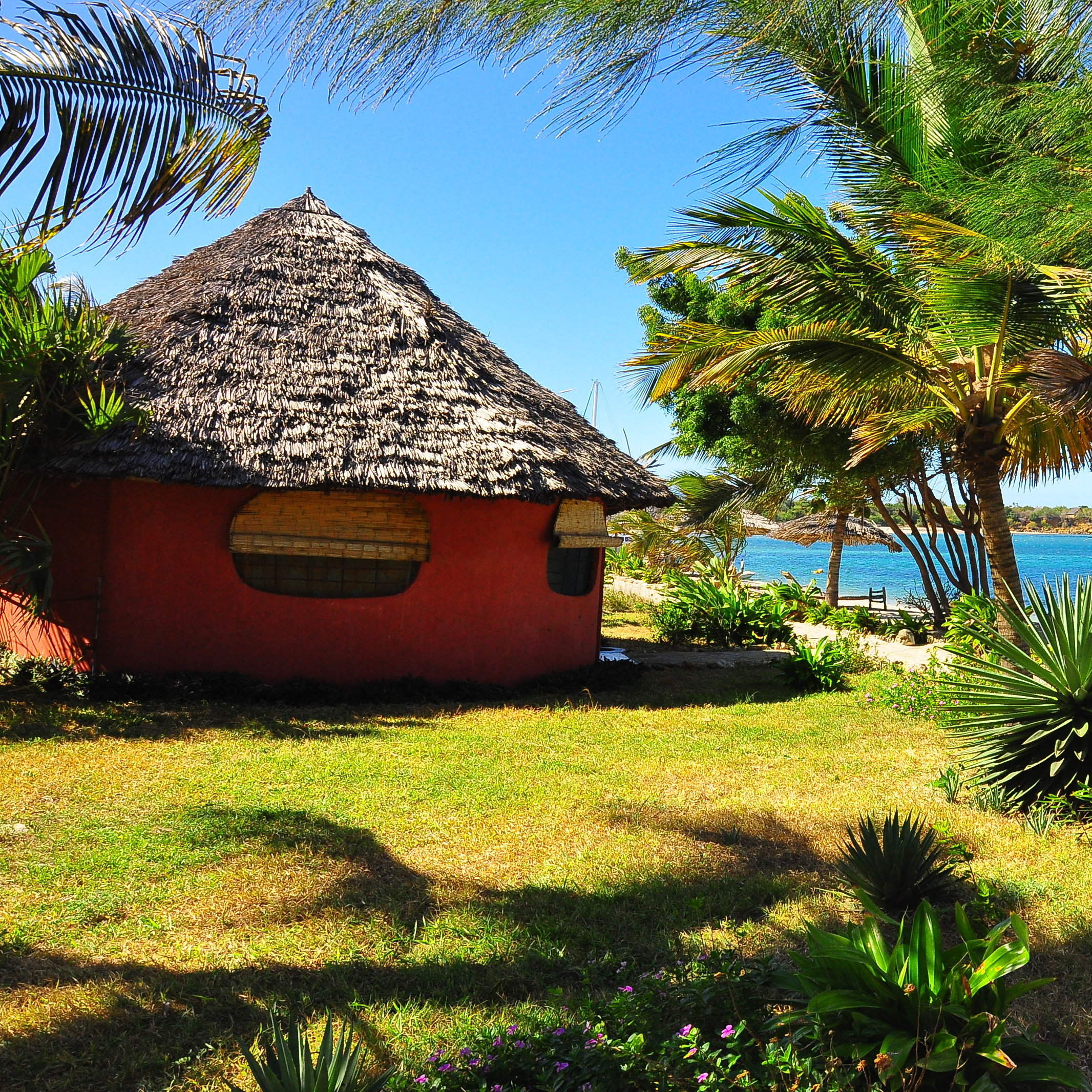
Kimbilio Lodge
Kimbilio Lodge is a simple beachfront lodge outside the sleepy port town of Kilwa Masoko and an ideal base to visit Kilwa Kisiwani ruins.
When to go to Tanzania Coast
Our month by month guide: What it's like to visit The Tides in Tanzania Coast
Jan
Feb
Mar
Apr
May
Jun
Jul
Aug
Sep
Oct
Nov
Dec
Tanzania in January
January usually marks the start of the short dry season, although the exact timings of this are a little unpredictable. You can expect clear blue skies and sunshine, if the short rains have stopped, and the temperatures will be building. The short dry season is a little less pronounced in Southern Tanzania, and so it can still be wet in these areas. It is an interesting time for avians as resident birds go into breeding plumage and migrant species can be present.
Once the New Year busy period has quietened down, January can offer great value and quieter parks, although the weather can be variable, and in the Selous and Ruaha the wildlife is more dispersed.
- Variable weather: clear & dry or cloudy with some rain.
- Occasional thunderstorms may occur.
- A good time of year for birding as and many migrant species are around
- The wildebeest migration is gathering in the southern Serengeti.
- Busy in early January, quietening down through the month.
Our view
A good time to visit, with pros & cons
Weather in January
Tanzania in February
February is during the short dry season and is one of the hottest months in Tanzania, with temperatures reaching around 33°Celsius. This can be a good time to visit, as some areas of the Northern Circuit are comparatively quieter than during the European summer months, and lodge rates are also a little lower.
The wildebeest will typically be on the southern plains of the Serengeti for their calving season, which tends to occur in a 2-3 week window in early-mid February – although this does vary year on year. This is also a particularly rewarding time for birdlife, as northern hemisphere migrants join the resident species.
- Hot and dry weather.
- Wildebeest migration calving on Serengeti’s southern plains.
- Ngorongoro Crater and southern Serengeti busy for the migration.
- Selous and Ruaha are typically quiet at this time.
- The parks are likely to be lush and green, leading to pretty landscape
Our view
A very good time to visit
Weather in February
Tanzania in March
The heavier ‘long rains’ start in earnest in March although exactly when varies year on year. With no need to stay close to permanent water sources, migratory wildlife disperses, and so game viewing starts to become more challenging. This is most prominently seen in Tarangire National Park. The wildebeest migration may still be calving, or have moved on into the central regions of the Serengeti.
Many of the camps in the southern parks close mid March and mobile tented camps in the Serengeti will wind down towards the end of the month in order to move location or carry out refurbishments, ready for the new tourist season.
- Hot with building humidity, before the rains begin at some point.
- Wildlife viewing is variable depending on the start of the rains.
- Parks are quiet and rates are low.
- Not great for southern or western Tanzania.
- March can be a good time for birding, with many migrant species.
Our view
A good time to visit, with pros & cons
Weather in March
Tanzania in April
April is in the middle of the long rainy season and is the wettest month, with on average 250mm of rain. Temperatures are fairly high and humid in comparison to the rest of the year. Expect the bush to be lush and flowering, and alive with insects, birds and smaller animals. It is however also dense, allowing wildlife to hide, which in turn makes game viewing harder. This is a very quiet time in terms of visitor numbers.
Many of the tented camps are closed in April, however the larger lodges remain open. The rates are significantly cheaper, and so if you are willing to work harder to spot the bigger game, some accommodation bargains can be had.
- Heavy rain expected, with impressive thunderstorms and lightning.
- Many camps closed and roads impassable due to ground conditions.
- Rates are at their lowest all year round, with very few other tourists
- Places that are open are green and vibrant, wildlife more dispersed.
Our view
This is not a great time to visit
Weather in April
Tanzania in May
As Tanzania is close to the equator there is no dramatic difference in climate throughout the year, but temperatures do start to drop a little in May. The rains are likely to still be present, although potentially clearing towards the end of the month. Visitor numbers and lodge rates are still low. The wildebeest migration is making its way through the western regions of the Serengeti, crossing the Grumeti River.
Virtually all camps in southern Tanzania remain closed, and many of the roads and tracks in the Selous become impassable.
- Heavy rains and storms are likely, this can create some dramatic skies
- Blissfully quiet in northern Tanzania, and a good time to avoid crowds
- The parks are likely to look lush and green, with long grass.
- Wildlife is likely to be more dispersed, with fewer sightings.
- The low prices make safaris much more affordable at this time.
Our view
This is not a great time to visit
Weather in May
Tanzania in June
The rains come to an end at some point during the month and migratory wildlife begins to be drawn back to perennial water sources as the land starts to dry up. It’s likely that the parks will still be quite green and the grass high though, so walking and fly-camping may be unlikely. This marks the start of the season with camps reopening, but prices are still more affordable than the subsequent months.
The migration may still be in the Western Corridor, or on the move northwards towards the Mara River. Western Tanzania presents more challenging conditions for chimpanzee trekking in Mahale National Park, as the chimps are higher in the mountains.
- Variable weather: clear & dry or cloudy with some rain.
- A transitory time for the migration – moving from west to north.
- The parks may still be quite green, and grasses high.
- Wildlife may be dispersed still.
- Relatively low visitor numbers and good value, shoulder season prices.
Our view
A good time to visit, with pros & cons
Weather in June
Tanzania in July
July is considered to be the start of the peak season, with no rainfall expected and pleasant daytime temperatures. As the parks dry, the wildlife congregates in fewer areas, grass is eaten and trampled by the migration, and game viewing gets better and better. The wildebeest are typically arriving in the northern Serengeti, ready to begin their period of crossings of the Mara River.
In the Selous and Ruaha wildlife sightings can be fantastic, with animals gathering around the lakes and rivers. Great conditions and school holidays mean the parks are at their busiest, with Ngorongoro and the Serengeti particularly crowded.
- Dry and warm daytimes, chilly and windy in the mornings and evenings.
- Great wildlife viewing, as water sources diminish.
- The most popular time of year with very high visitor numbers.
- Prices are at their highest due to the great conditions on the ground.
- To avoid the crowds consider Tanzania’s southern parks.
Our view
Fantastic: the very best time to visit
Weather in July
Tanzania in August
August is the middle of the long dry season, with clear skies and sunny weather. You can expect some cooler weather at night and first thing in the morning. Remember to pack layered clothing, so you can wrap up warm on your early morning game drives, but remain comfortable as it heats up throughout the day.
August is a very popular time to visit, so accommodation prices are at their highest and advanced booking is necessary. It can get noticeably busier in some of the northern parks – in particular the Ngorongoro Crater and northern Serengeti, as visitors flock to the area in hope of witnessing an exciting migration river crossing.
- Dry and warm daytimes, chilly in the early mornings and evenings.
- General wildlife viewing should be excellent.
- An exciting time of year for the wildebeest migration.
- Certain areas will be very busy and camps fill up fast.
- Great wildlife sightings in the Selous and Ruaha, and fewer people.
Our view
Fantastic: the very best time to visit
Weather in August
Tanzania in September
September can be an excellent time of year to visit Tanzania. As the parks continue to dry up the wildlife becomes increasingly reliant on the remaining water sources, leading to high densities of animals. Whilst early September can be busy, with fewer families traveling at this time the parks typically become quieter as the month goes on.
You are still likely to see the wildebeest migration in the northern Serengeti, with river crossings occurring on a regular basis. Tanzania’s southern parks are also fantastic at this time of year, generally receiving far fewer visitors than the north, and wildlife sightings can be great. Prices remain high and the weather generally remains good.
- Wildlife viewing in September can be fantastic.
- Whilst still fairly busy, often the parks are typically a little quiet
- The parks will start to become very dry, with little new vegetation
- Cooler mornings and evenings, warming up during the day.
- Prices remain high.
Our view
Fantastic: the very best time to visit
Weather in September
Tanzania in October
At the tail end of the dry season, the wildlife should be the easiest to spot, although photographers should be aware that it can be a bit dusty at this time of year, as there has been no rain for several months. Great general wildlife viewing throughout as animals are attracted to remaining sources of water. Elephant numbers are particularly high at this time in Tarangire, and Mahale and Katavi are especially rewarding with frequent wildlife sightings close to camp.
There is a chance of rainfall towards the end of the month, if the short rains commence. While prices remain high, visitors numbers are significantly lower than in July-August.
- Mostly dry and temperatures comfortably warm, with the chance of storm
- Great game viewing although the landscape can be a bit barren.
- Much lower visitor numbers than the earlier months.
Our view
A very good time to visit
Weather in October
Tanzania in November
In November you can expect the start of the short rains, although the start date varies every year. The rains are highly localised, and are much lighter and more unpredictable than the long rains that occur earlier in the year. These should not really interfere with your safari – as the game viewing at this time is still good - but you should pack a waterproof jacket and be prepared for some short rain showers!
The majority of tented camps remain open, but some of the mobile camps in Northern Tanzania will close for the latter half on the month. Given the seasonality, camps are charging shoulder season rates so there are often some bargains to be had. Early November can offer great value for money and the weather conditions are likely to be comparable to late October.
- Variable weather: clear & dry or cloudy with some rain.
- Parks are comparatively quiet and prices at the lower end.
- Some camps will close towards the end of the month for maintenance.
- Good wildlife sightings, but animals will disperse when rain starts
- The wildebeest migration is on the move and the location unpredictable
Our view
A good time to visit, with pros & cons
Weather in November
Tanzania in December
December is also during the short rainy period, but this does not stop Tanzania being a popular destination to spend the festive period. Be aware that many of the lodges book up early, and charge peak rates over this time. Advanced booking is essential over this period, especially if travelling in larger family groups.
Travelling in December outside of the festive period allows travellers to make use of excellent shoulder season rates. Temperatures are pleasant with the averages of 27Celsius, although there is the chance of intermittent thunderstorms.
- Variable weather:clear & dry or cloudy with some rain and thunderstorm
- Good general game viewing in parks with low seasonality - Serengeti.
- Very quiet early in the month, becoming exceptionally busy.
- Prices reflect this – great value rising to the highest they are.
- The wildlife in southern Tanzania is more dispersed.
Our view
A good time to visit, with pros & cons
Weather in December

Looking for inspiration on where to travel next?
Visit our trip chooser to explore your options and find inspiration for your perfect African adventure
Inspire me